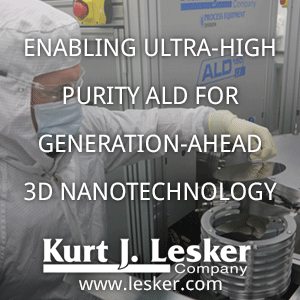JSR Corporation is expanding its global development and production of advanced photoresists by establishing a new R&D center in Japan and constructing a semiconductor photoresist plant in Korea. Since acquiring Inpria Corporation in 2021, JSR has been commercializing Metal Oxide Resist (MOR) for EUV lithography. The new R&D center in Japan’s Kanto region will enhance collaboration with global customers and partners, while the Korean plant, expected to begin operations in 2026, will handle the final production process for MOR to support local adoption. JSR aims to drive innovation in photoresists and help customers establish commercial production processes worldwide.
JSR's MOR, developed through its 2021 acquisition of Inpria Corporation, is a next-generation photoresist designed for EUV lithography. MOR is based on metal oxide nanoparticles, offering superior etch resistance and improved pattern resolution compared to traditional chemically amplified resists (CARs). This allows for finer feature definition and reduced line-edge roughness, critical for advanced semiconductor manufacturing below 10 nm. JSR has been scaling MOR for commercial adoption, with major semiconductor manufacturers evaluating its use in high-volume production. The company is expanding its R&D and manufacturing capacity, including a new R&D center in Japan and a production facility in Korea, to support global adoption of MOR.
JSR have investigated different flavors of MOR for EUV lithography, primarily focusing on variations in metal cores and process optimizations. Initially, zirconium (Zr) and hafnium (Hf) based MORs were explored, but their relatively low EUV absorption led researchers to investigate alternative metal cores such as titanium (Ti), zinc (Zn), indium (In), and tin (Sn). These new metal cores exhibited improved lithographic performance, achieving higher EUV absorption, smaller particle size, and better scum reduction. Additionally, process optimizations such as using higher dissolution rate photoacid generators (PAGs), new organic solvent developers, and lower soft bake temperatures were tested to improve scum removal and resolution. The new metal core variants demonstrated resolutions down to 13 nm with reduced defects, suggesting their potential for advanced semiconductor manufacturing.
In August 2024, JSR Corporation completed the acquisition of Yamanaka Hutech Corporation (YHC), a Kyoto-based manufacturer specializing in high-purity chemicals for semiconductor manufacturing. This strategic move allows JSR to expand its product portfolio to include Chemical Vapor Deposition (CVD) and Atomic Layer Deposition (ALD) precursors, which are essential for forming advanced and complex semiconductor device structures. YHC, established in 1960, has over 60 years of experience in advanced molecular design, synthesis technology, and quality control systems, supplying high-quality CVD/ALD precursors to leading-edge semiconductor device manufacturers. The acquisition aligns with JSR's strategy to strengthen its position as a global supplier of semiconductor materials, enhancing its capabilities in both miniaturization and device structure innovation.
Sources:



%20(1).png)

No comments:
Post a Comment